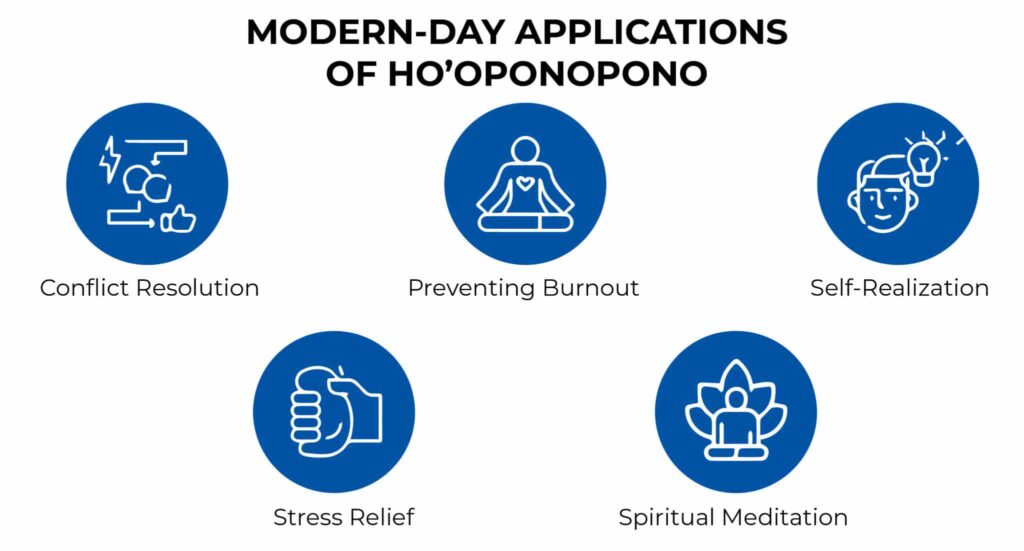In this article, we’ll explore the process and elements of a typical Ho’oponopono session. You’ll learn about the traditional Hawaiian practice of reconciliation and forgiveness, and how it is applied in a modern setting. We’ll discuss the role of a facilitator and the various techniques used during a session. By the end, you’ll have a clear understanding of what to expect during a Ho’oponopono session and how it can benefit you.

Introduction
In this article, we will explore what a typical Ho’oponopono session looks like. Ho’oponopono is a traditional Hawaiian practice that focuses on healing, reconciliation, and personal growth. The session involves various rituals, practices, and discussions aimed at fostering forgiveness, understanding, and resolution. Join us as we delve into the different aspects of a Ho’oponopono session and discover the transformative power it holds.
Definition of Ho’oponopono
Ho’oponopono can be loosely translated as “to make right” or “to rectify an error” in the Hawaiian language. It is a profound practice that centers around the idea of taking responsibility for our actions, thoughts, and emotions. Ho’oponopono emphasizes the interconnectedness of all beings and the importance of healing and reconciliation in relationships.
Origin of Ho’oponopono
Ho’oponopono has its roots in ancient Hawaiian culture and has been practiced for generations. It was traditionally used to resolve conflicts within families or communities and restore harmony. Over time, this sacred practice has gained recognition and popularity beyond the Hawaiian Islands, spreading its healing essence across the world.
Purpose of a Ho’oponopono Session
A Ho’oponopono session serves multiple purposes, all of which revolve around healing, reconciliation, self-reflection, and personal growth.
Healing and Reconciliation
One of the primary objectives of a Ho’oponopono session is to facilitate healing and reconciliation within relationships. It provides a safe and supportive space for participants to express their feelings, address grievances, and work towards resolution. The session allows for open and honest communication, which can lead to forgiveness, understanding, and the restoration of harmony.
Self-Reflection and Personal Growth
A Ho’oponopono session also offers an opportunity for self-reflection and personal growth. Participants are encouraged to examine their own role in any conflicts or challenges they face. Through introspection, individuals can gain insights into their behaviors, patterns, and beliefs that may contribute to disharmony. This process allows for self-awareness, growth, and the shedding of emotional baggage.
Preparation for a Ho’oponopono Session
Before the actual session takes place, there are certain preparations that need to be made to ensure a conducive environment for healing and growth.
Choosing a Facilitator
A Ho’oponopono session typically requires the presence of a facilitator who is skilled and experienced in guiding the process. The facilitator acts as a neutral party and helps create a safe space for all participants. They may be a trained practitioner or someone respected within the community for their wisdom and understanding.
Selecting a Suitable Location
The location of the session plays a crucial role in setting the right ambiance and energy. Ideally, it is held in a quiet and peaceful environment, such as a serene natural setting or a dedicated healing space. The space should be free from distractions, allowing everyone to focus and engage fully in the process.
Opening Rituals
The start of a Ho’oponopono session involves specific rituals aimed at cleansing, grounding, and setting intentions for the session.
Cleansing and Grounding Practices
Participants generally begin by engaging in cleansing and grounding practices. This can involve deep breathing exercises, meditation, or any other technique that helps release tension, center the mind, and connect with a sense of calm. Cleansing rituals like smudging or the use of essential oils may also be incorporated to cleanse the energy of the space.
Setting Intentions for the Session
Once everyone is centered and present, the facilitator guides the group in setting intentions for the session. This involves reflecting on what each participant hopes to achieve or resolve during the Ho’oponopono process. Intentions may include seeking forgiveness, understanding, or finding closure on specific issues. Clarity of intention allows the group to collectively focus their energy and efforts towards the desired outcomes.

Sharing and Listening
The heart of a Ho’oponopono session lies in the sharing of experiences, emotions, and perspectives, as well as the attentive and empathetic listening that follows.
Each Participant’s Turn to Share
In a structured manner, each participant takes turns sharing their feelings, experiences, and thoughts within the supportive space. This sharing can be facilitated through verbal expressions or non-verbal means, such as writing or artwork. The focus is on creating a non-judgmental atmosphere where everyone feels safe to express themselves authentically.
Attentive and Empathetic Listening
As each participant shares their story, the rest of the group practices attentive and empathetic listening. This entails offering undivided attention, genuine interest, and respect for the speaker’s perspective. Listening with empathy allows participants to understand each other on a deeper level and fosters a sense of connection and compassion.
Ho’oponopono Practices
During a Ho’oponopono session, various practices and exercises are employed to facilitate healing, forgiveness, and resolution.
Verbal and Non-Verbal Communication
Participants engage in open communication, expressing their emotions, needs, and desires. Honesty and vulnerability are encouraged throughout the process. Non-verbal communication techniques, such as eye contact, body language, and touch, may also play a role in creating a deeper sense of connection and understanding.
Forgiveness Exercises
Forgiveness exercises are a vital component of a Ho’oponopono session. Participants are guided through practices aimed at acknowledging and releasing feelings of resentment, anger, and hurt. These exercises may include writing forgiveness letters, guided meditations, or symbolic rituals. Through forgiveness, individuals can free themselves from emotional burdens and pave the way for healing and reconciliation.

Resolution and Reconciliation
The core purpose of a Ho’oponopono session is to achieve resolution and reconciliation among the participants involved.
Identifying Core Issues
A Ho’oponopono session encourages the identification of core issues underlying conflicts or challenges. By diving deep into the root causes, participants gain a better understanding of the dynamics at play. This awareness helps pave the way for genuine healing and resolution.
Apologies and Forgiveness
Once core issues have been identified, participants engage in a process of offering apologies and seeking forgiveness. This involves acknowledging responsibility for one’s actions, expressing remorse, and sincerely asking for forgiveness. The act of forgiveness, in turn, allows for the healing and restoration of relationships.
Closing Rituals
After the resolution and reconciliation phase, a Ho’oponopono session is brought to a close through specific rituals aimed at expressing gratitude and reflecting on the insights gained.
Expressing Gratitude
Participants are encouraged to express gratitude for the healing, growth, and transformation that has occurred during the session. Gratitude is expressed towards each other and the facilitator, as well as towards oneself for the courage to engage in the process.
Final Reflections and Insights
Before parting ways, participants take a moment to reflect on the insights gained and the impact the session has had on their lives. They may choose to share any final thoughts, lessons, or intentions for continued healing and growth.

Follow-up and Integration
While a Ho’oponopono session can be immensely transformative on its own, the journey towards personal healing and growth continues long after the session ends.
Post-Session Practices
Participants are encouraged to engage in post-session practices to support their ongoing healing and integration. These practices may include journaling, meditation, forgiveness rituals, or seeking professional guidance if necessary. Continued self-reflection and self-care are vital to maintain the momentum and integrate the insights gained into daily life.
Continued Personal Healing and Growth
Ho’oponopono is not a one-time event but rather a lifelong journey. Individuals are empowered to take responsibility for their own healing, growth, and the cultivation of harmonious relationships. By embracing the principles of Ho’oponopono in their everyday lives, individuals can continue to experience personal transformation and contribute to collective healing.
Conclusion
A typical Ho’oponopono session encompasses a rich tapestry of rituals, practices, and discussions aimed at healing, reconciliation, and personal growth. Through sharing, listening, forgiveness exercises, and resolution, participants embark on a transformative journey towards understanding, compassion, and harmony. The power of Ho’oponopono lies in its ability to create deep connections, catalyze healing, and promote collective well-being. So, if you ever have the opportunity to participate in a Ho’oponopono session, embrace it wholeheartedly and open yourself to the transformative potential it holds.

